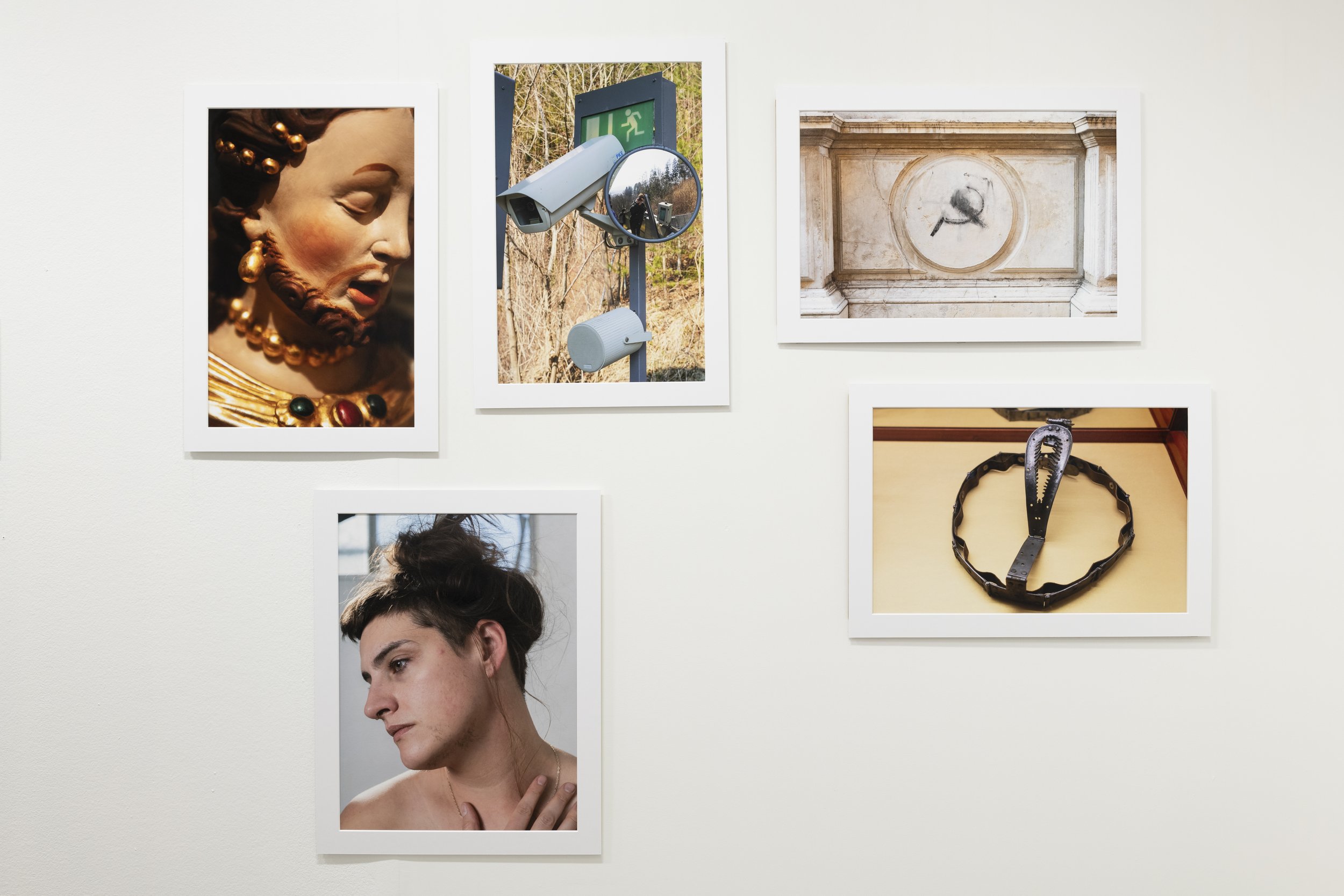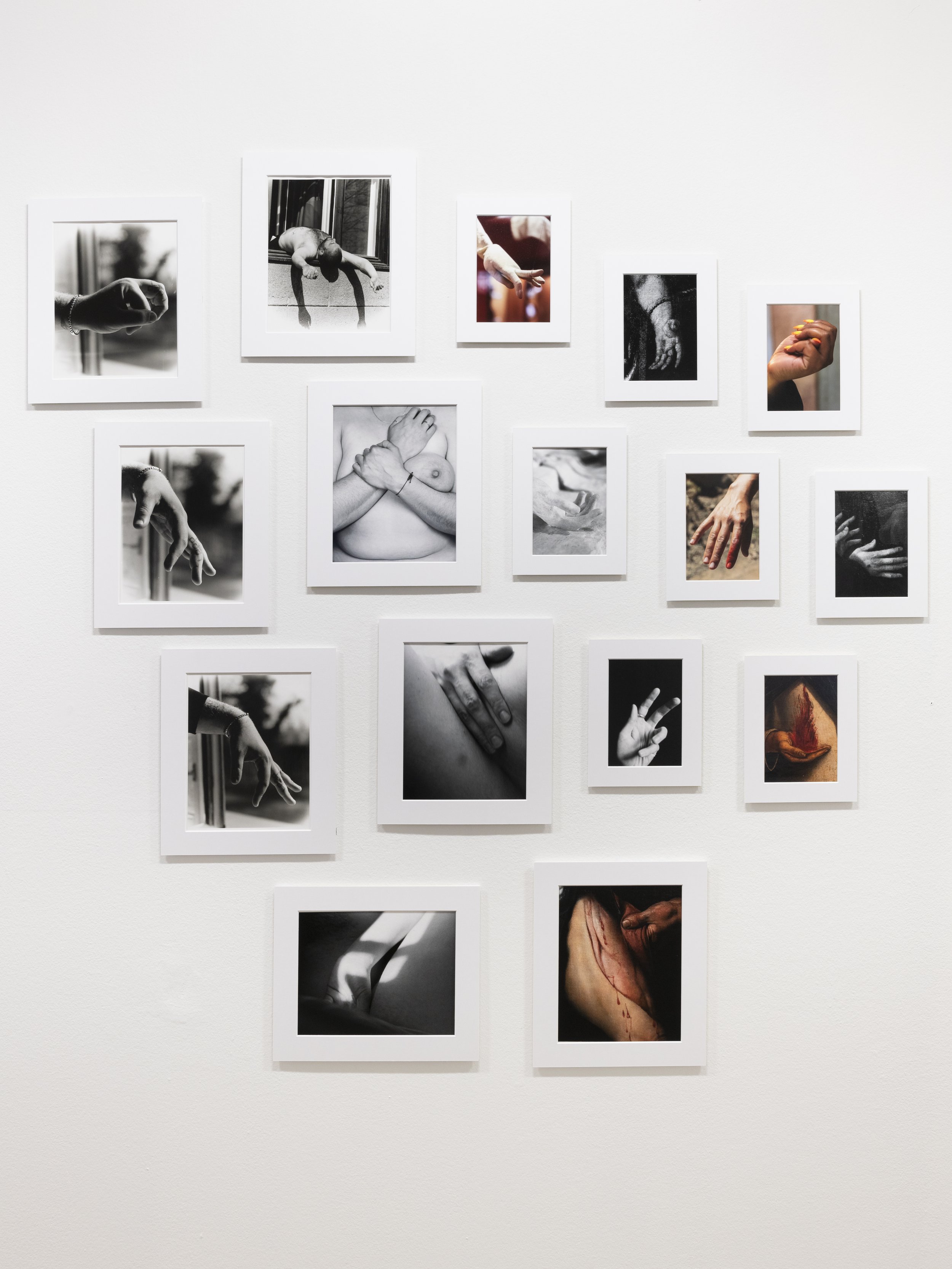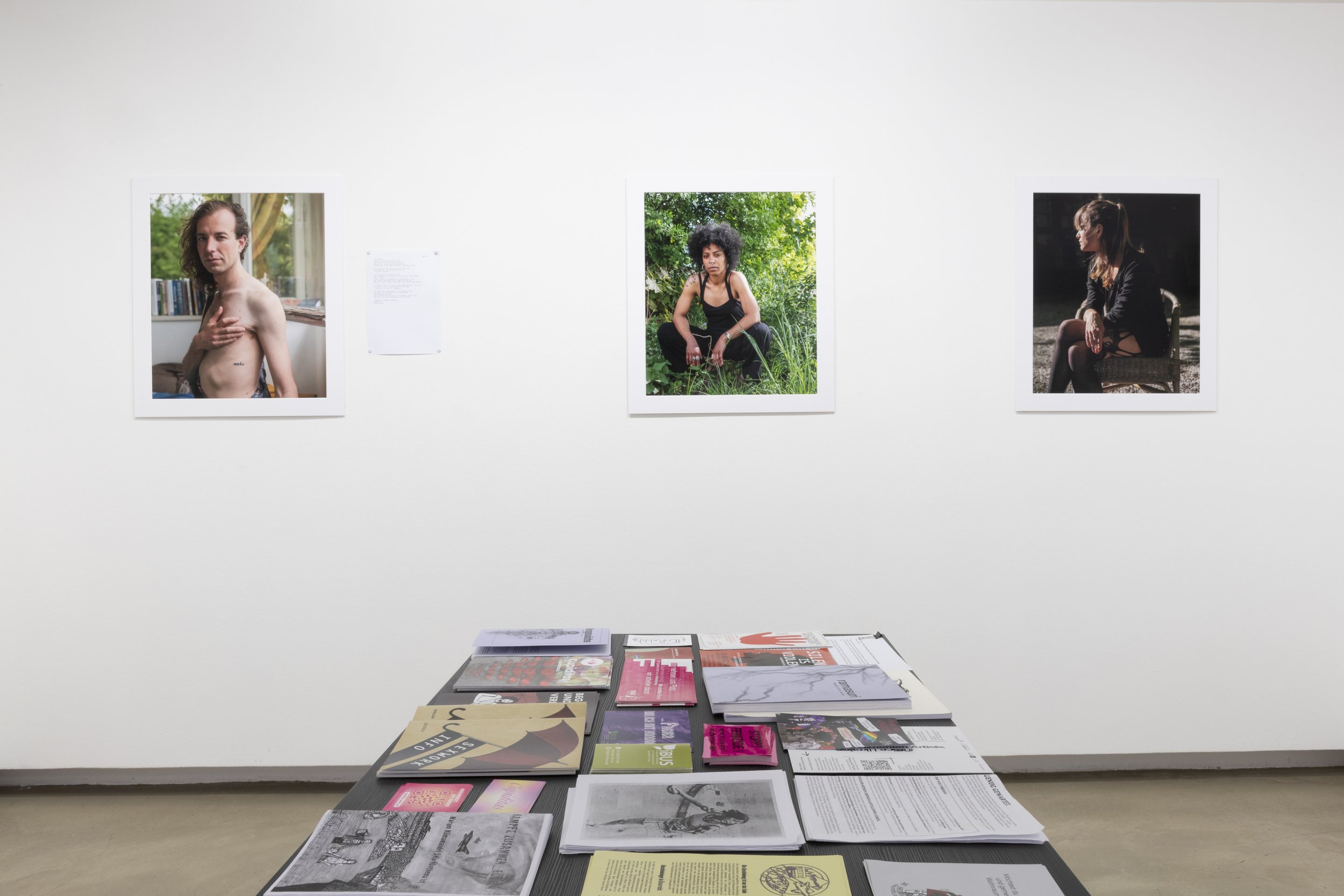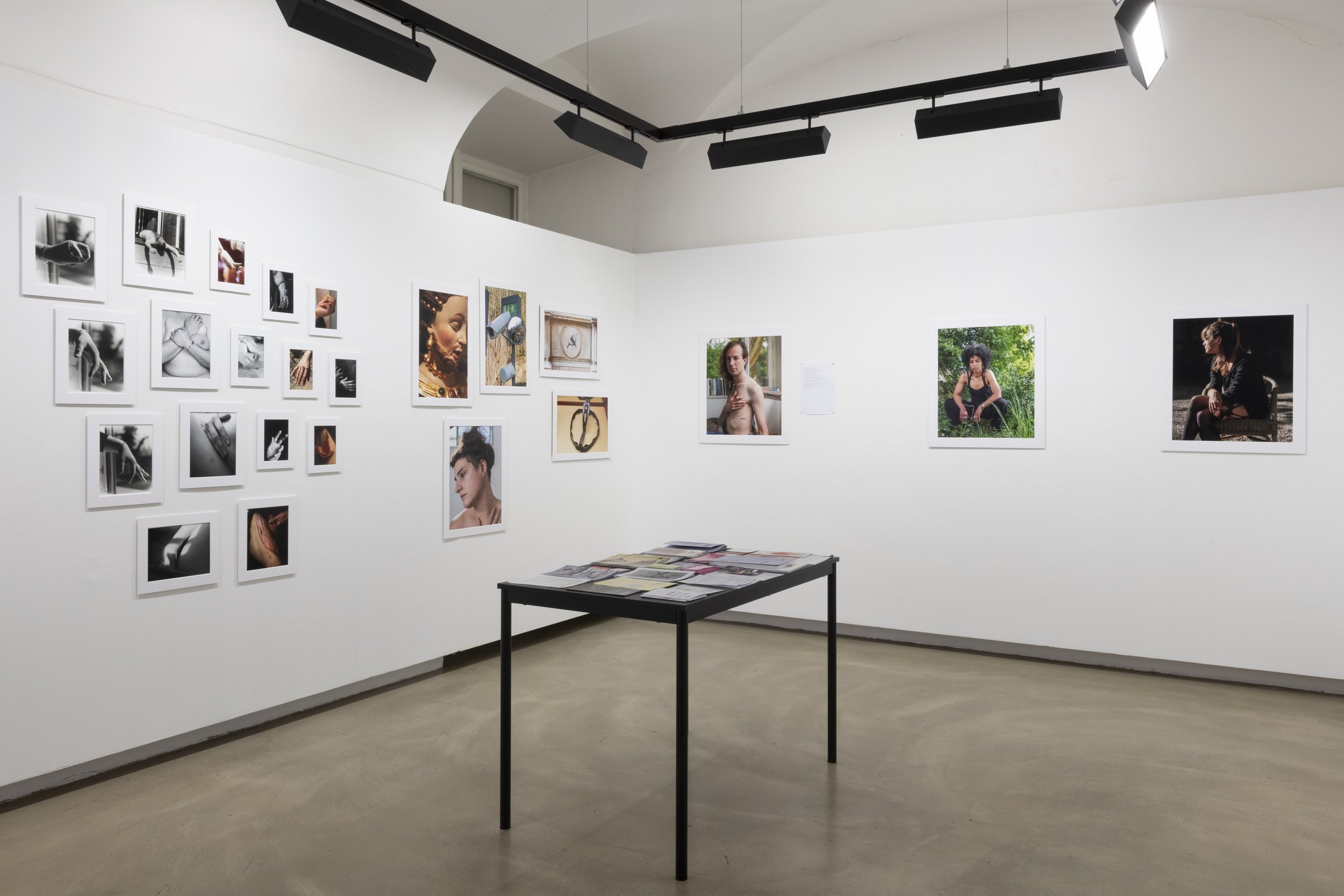A Saintly Curse
A Saintly Curse is an on going and multi-pronged body of work
Rooted in the story of St. Wilgefortis, which can be read about in depth in Issue #107 of e-Flux Journal, A Saintly Curse: on Gender, Sainthood, and Poly Cystic Ovary Syndrome.
As part of the Kunstlerhaus Buchsenhausen Fellowship for Art and Theory in Innsbruck, Austria, this project was expanded and exhibited in May, 2022 as part of a group exhibition;
The exhibition Corporeality, Repair, Conciliation: Investigating Ways Into a Better Coexistence addresses the urgent need to reconceptualize our social as well as socio-political relations with one another. Driven by apparently unstoppable capitalism, the erosion of these relations has long been concealed under the guise of virtual prosperity. However, in the light of the current geopolitical shifts set in motion by war and the resulting threatening and already occurring disruptions, the last doubts about the malign character of this erosion must be questioned. Therefore, wouldn’t it be now the very moment to reflect on practices, procedures, and ideas that aim at or already demonstrate sustainable forms of coexistence? This exhibition offers a perspective on the possibilities available. It brings together works and research materials the participants in the Fellowship Program for Art and Theory 2021-22, Rosalyn D’Mello, Suzana Milevska, Sam Richardson and Olga Ştefan, have produced or collected in Büchsenhausen over the past few months and which, on a common meta-level, deal in different ways with feminist-queer perspectives and proceedings, corporeality and identity, necessary remembrance and the accompanying rewriting of art history, as well as with questions of conflict and coming to terms with the past.
The photo-video work complex After Kümmernis by Sam Richardson also roams less-known paths. The artist deals with the figure of Saint Kümmernis, a “bearded crucified woman” who has been historically regarded as a patron saint for the relief from tribulations – in particular by women who wish to be liberated from abusive husbands or domestic situations, as well as by survivors of sexual assault, rape and incest. However, she is also worshipped by those bound or restricted, i.e. prisoners and other people in captivity. Depending on the region and era, she is known by other names, such as St. Kümmernis / Kummernuss (Germany, Austria), St. Uncumber (England) and St. Liberata (Italy). Sam Richardson’s personal connection to Wilgefortis is rooted in the hormonal Polycystic Ovarian Syndrome (PCOS) they have been diagnosed with. Referred to as the “thief of womanhood” in the medical community, the “masculinization” of female bodies is one of the main symptoms of PCOS. The male-patterned hair growth is a typical symptom that also affects the artist.
During the fellowship in Büchsenhausen, Richardson used the figure of Kümmernis as an identifying link to queer and minority communities of the present day that are still socially marginalized by the state or Catholic-religious hegemony in Tyrol and its larger area, but, in return, have developed strong queerness and resilience strategies. Being an artist who is also an activist in the USA and who makes their aesthetic practice available to a social-community goal, Richardson, sensitively, has portrayed several members from these communities in Innsbruck/Tyrol and blended these photographs with her own and Kümmernis‘ portraits in the installation.
The reference to an outcast symbolic figure of the Catholic Church, of canonized representations of suffering and their staged iterations as a queer or female subject, points to the historical dimension of excluding and disciplinary mechanisms established over centuries for women, transgender and non-binary people. These mechanisms have been legally removed in many Western countries, but it will take decades, if not centuries, to socially implement them as one must, unfortunately, observe in the imminent reintroduction of the ban on abortion in the USA by the highest court. In the exhibition, the new video work captures precisely these feelings, evoked and permanently anchored by such repressive disciplinary and exclusionary dynamics. In a way, the video also provides an adequate soundtrack for viewing the entire installation.
After Kummernis, May 2022






THANK YOU to all those who collaborated with me:
Virgil Taylor
Gina Disobey
Jakob
Anita
Valeria Rosanelli
Suzana Milevska
Carolyn Lazard
Diya Vij
Gabby Miller
THANK YOU to all those who have shared your knowledge with me, welcomed me, laughed with me and supported this project and my time here:
Cafe Lotta
iBUS
Maiz
Members of Fear the Queer!
FAK
Women Against Rape
Initiative bürglkopf schließen
Trini
Annika
Fanni
Iska
Nina Tabassomi
Julia Scolati
Reza
AEP
Tomáš Tóth
THANK YOU to the Büchsenhausen Team
and Family:
Andrei
Veronika
Moritz
Lukas
Olga
Richard
Rosalyn
Suzana
~~~~~~~~~~~~~~~~~~~~~~~~~~~~~~~~~~~~~
Without you all this work would not have been possible, I am grateful and inspired by you all
~~~~~~~~~~~~~~~~~~~~~~~~~~~~~~~~~~~~~













